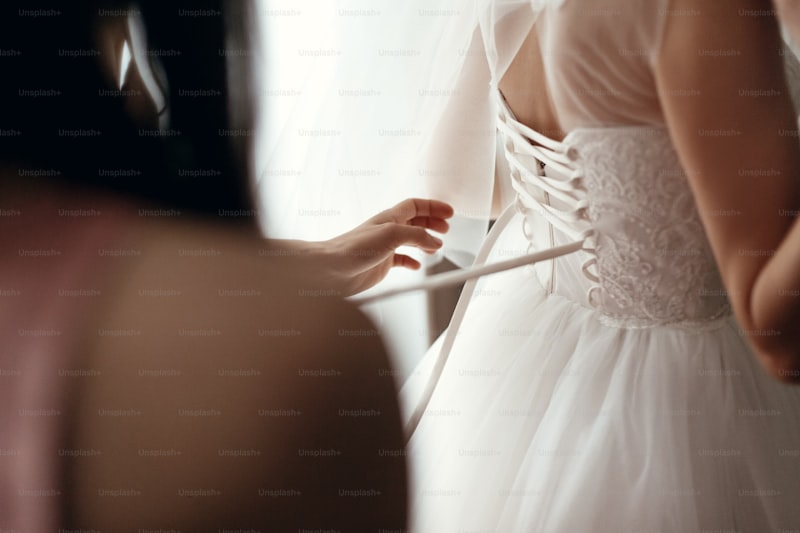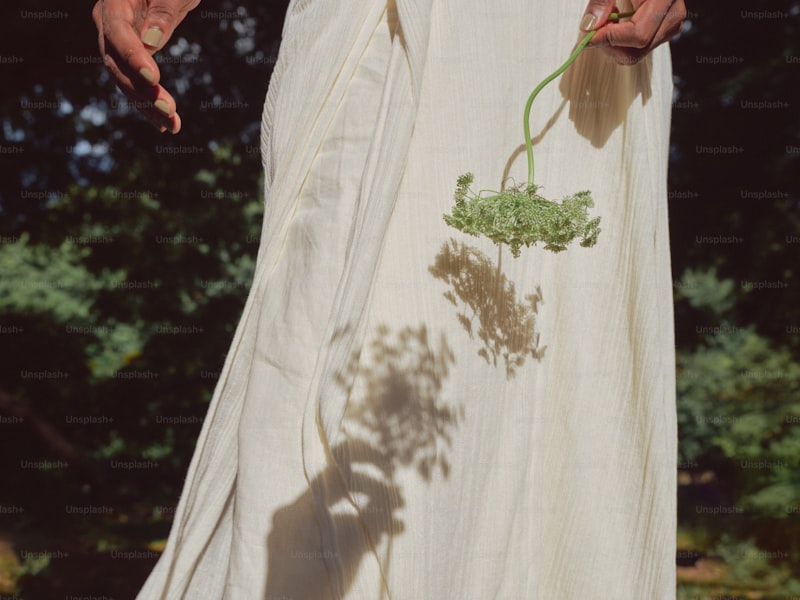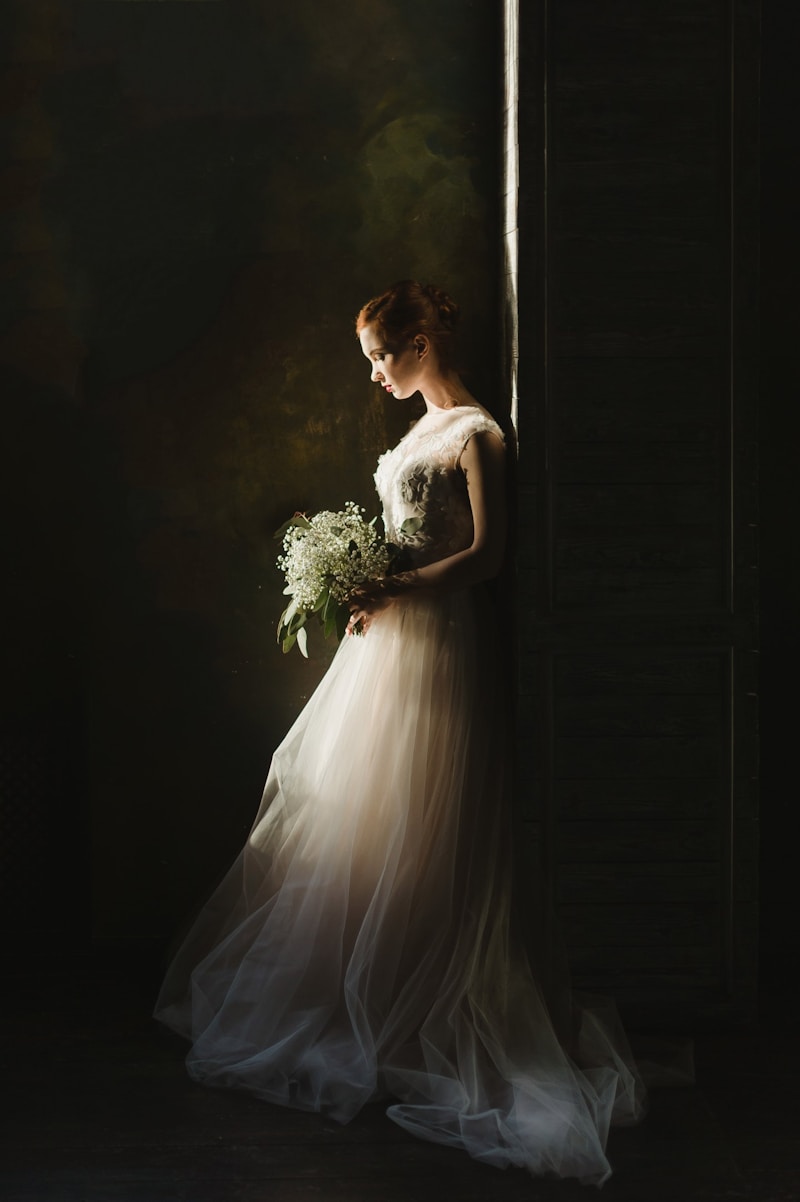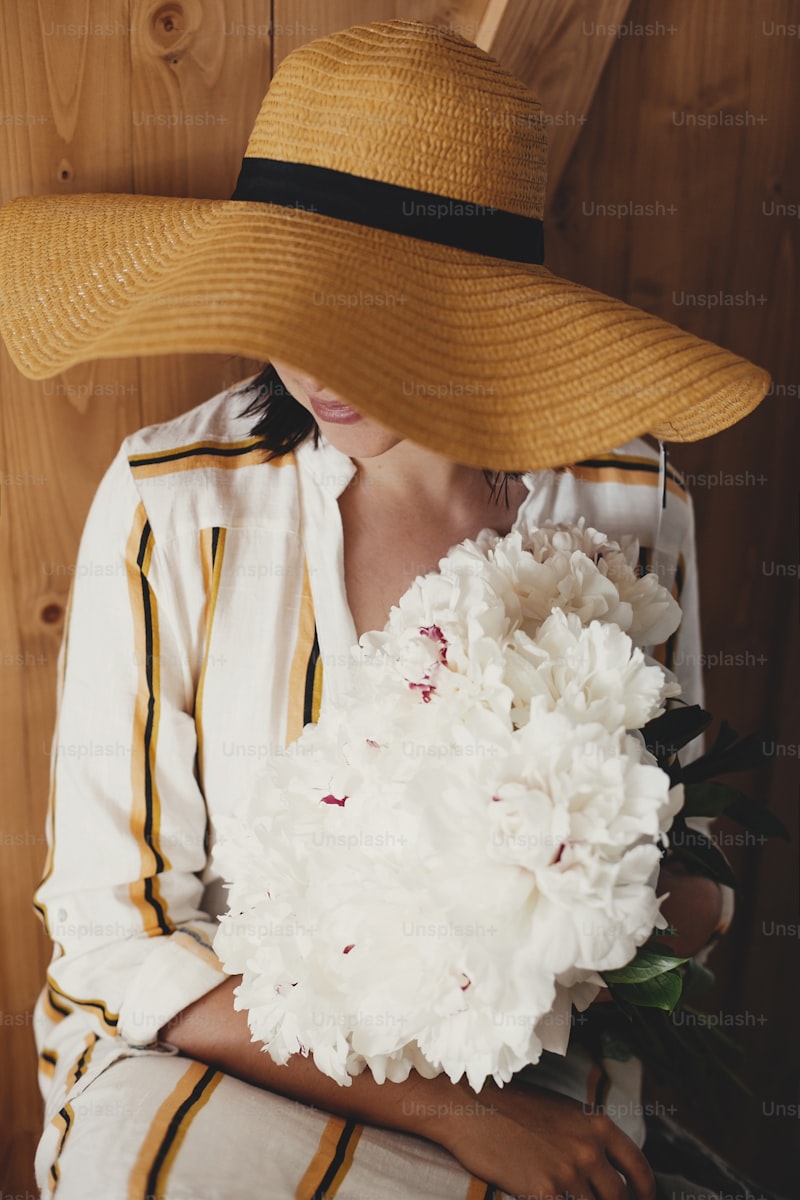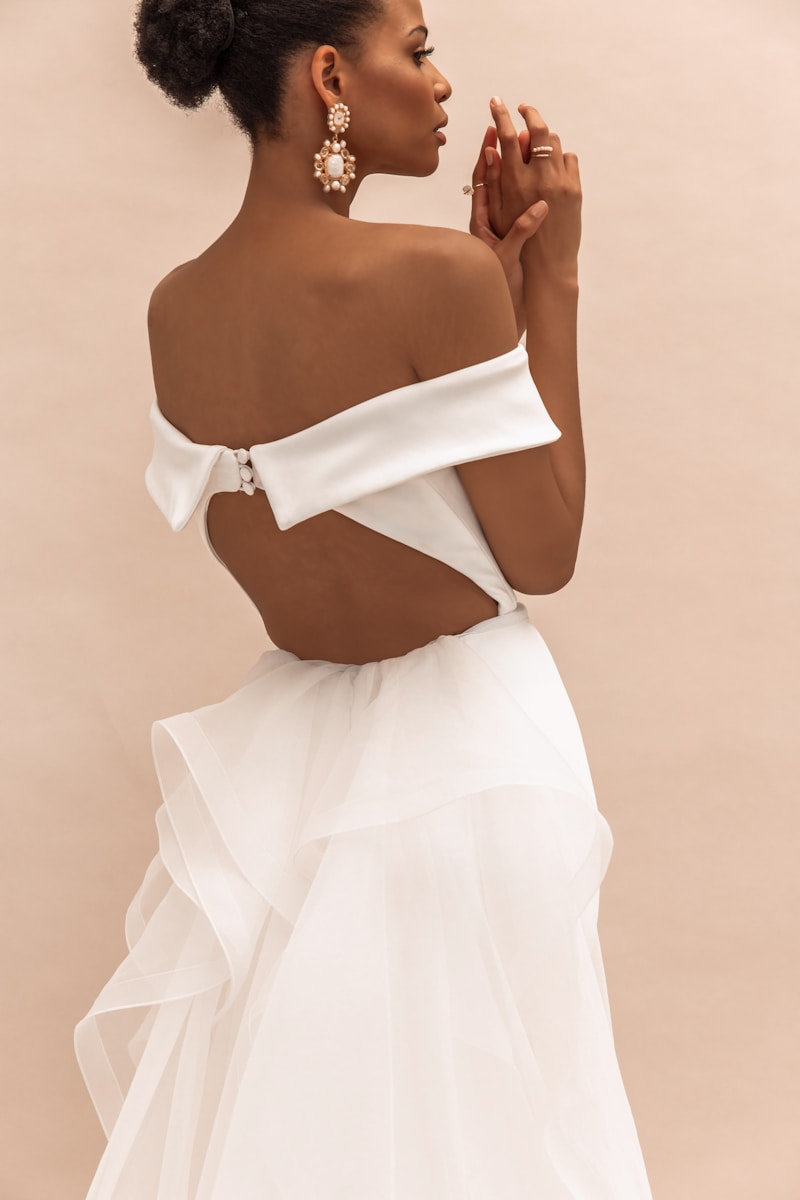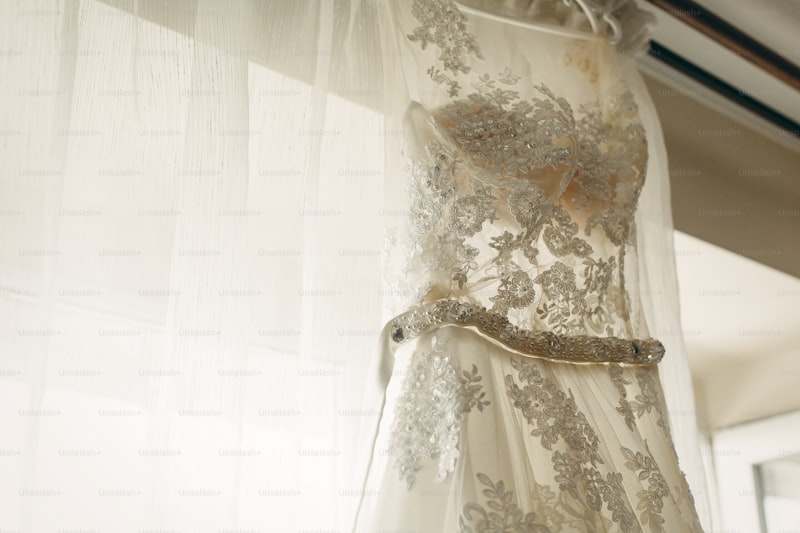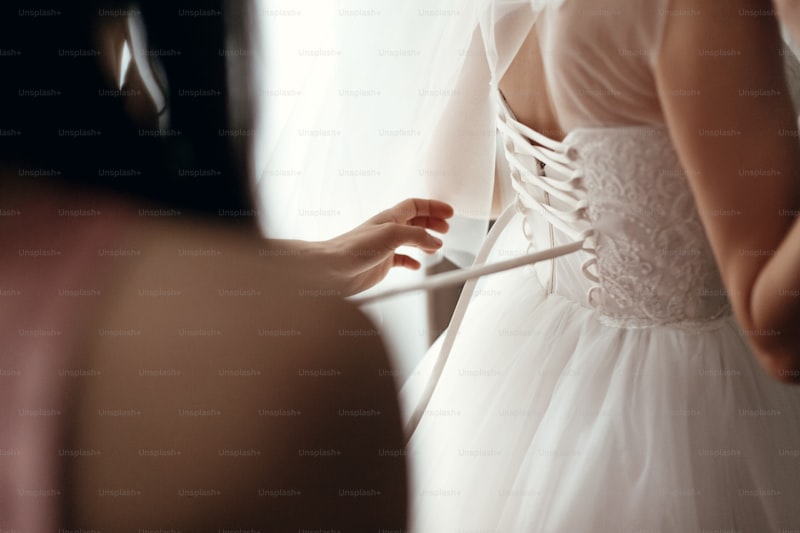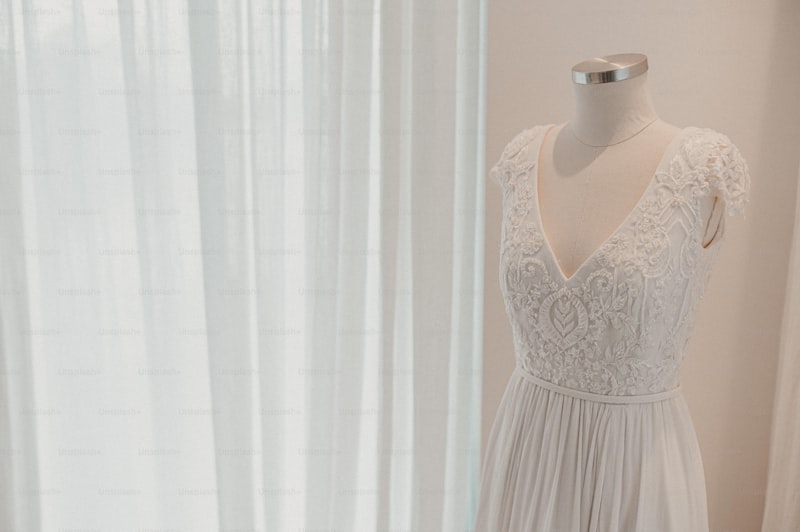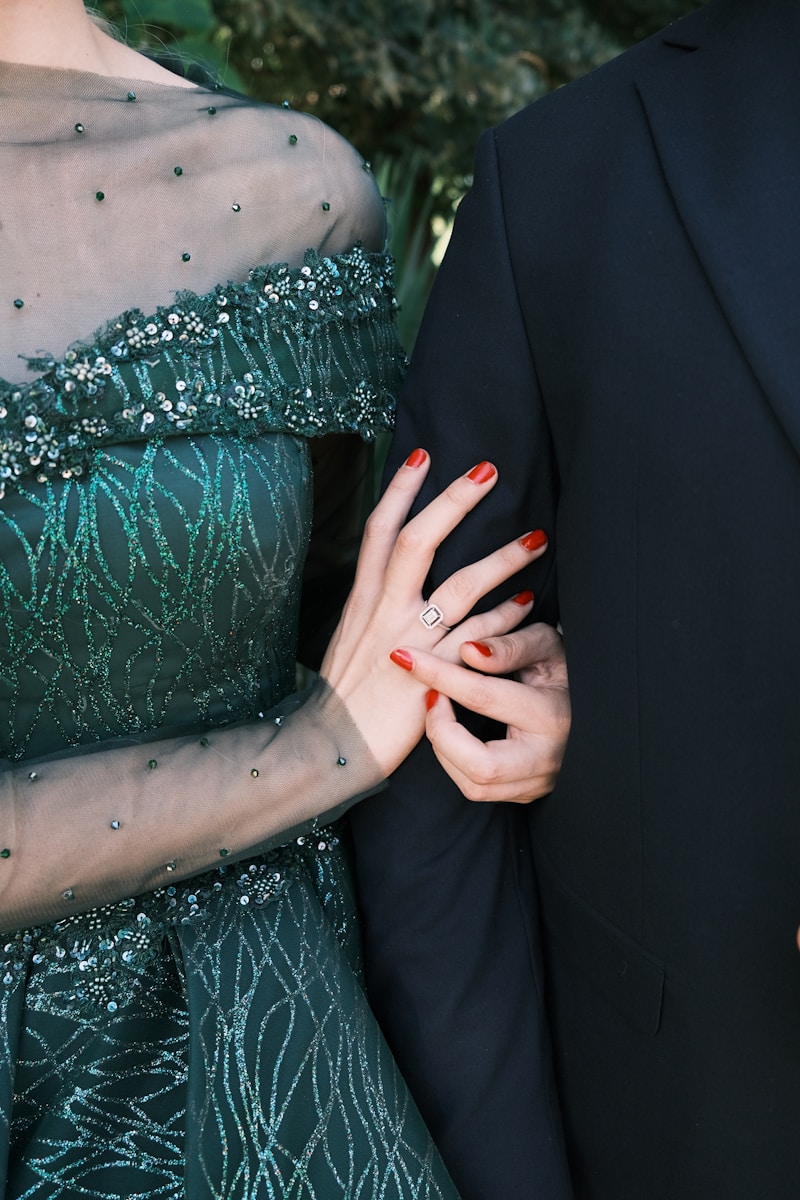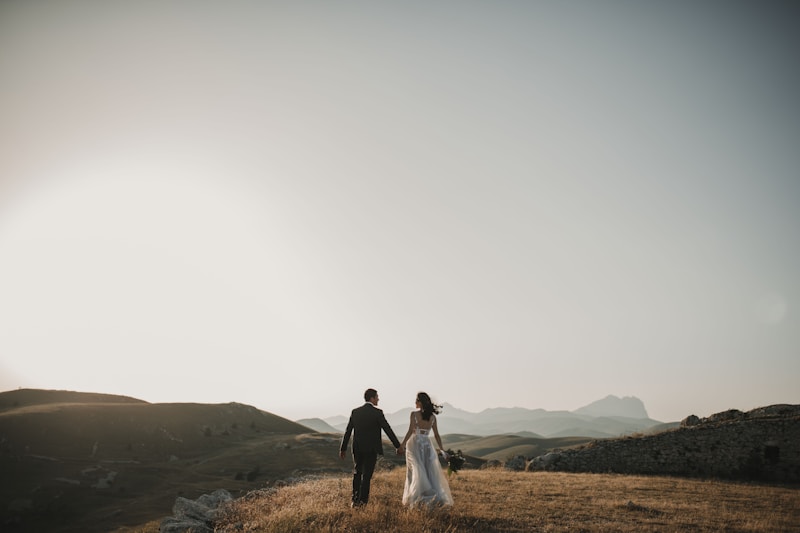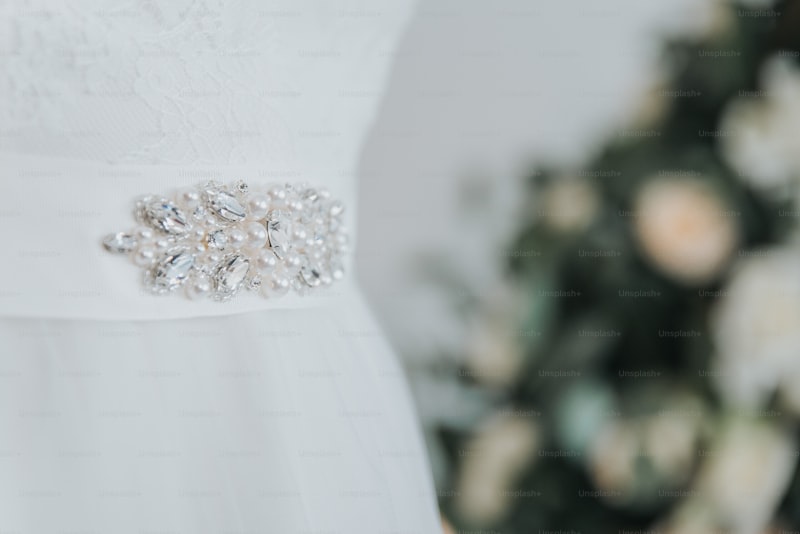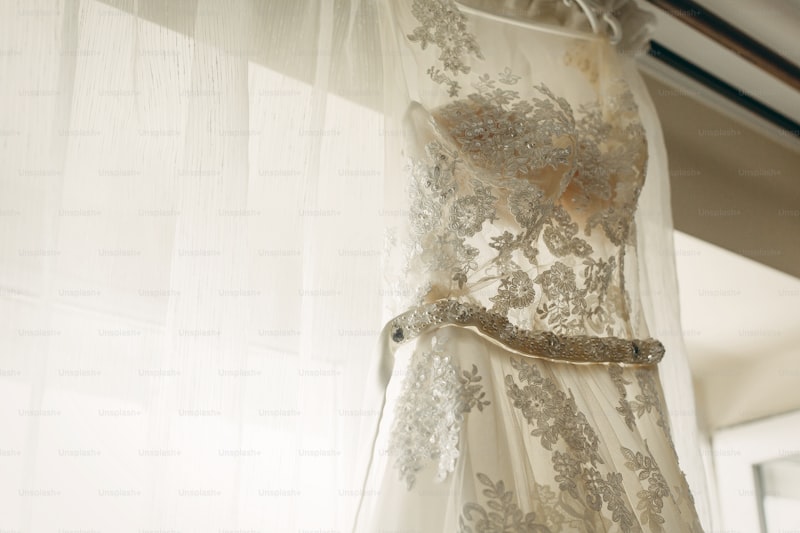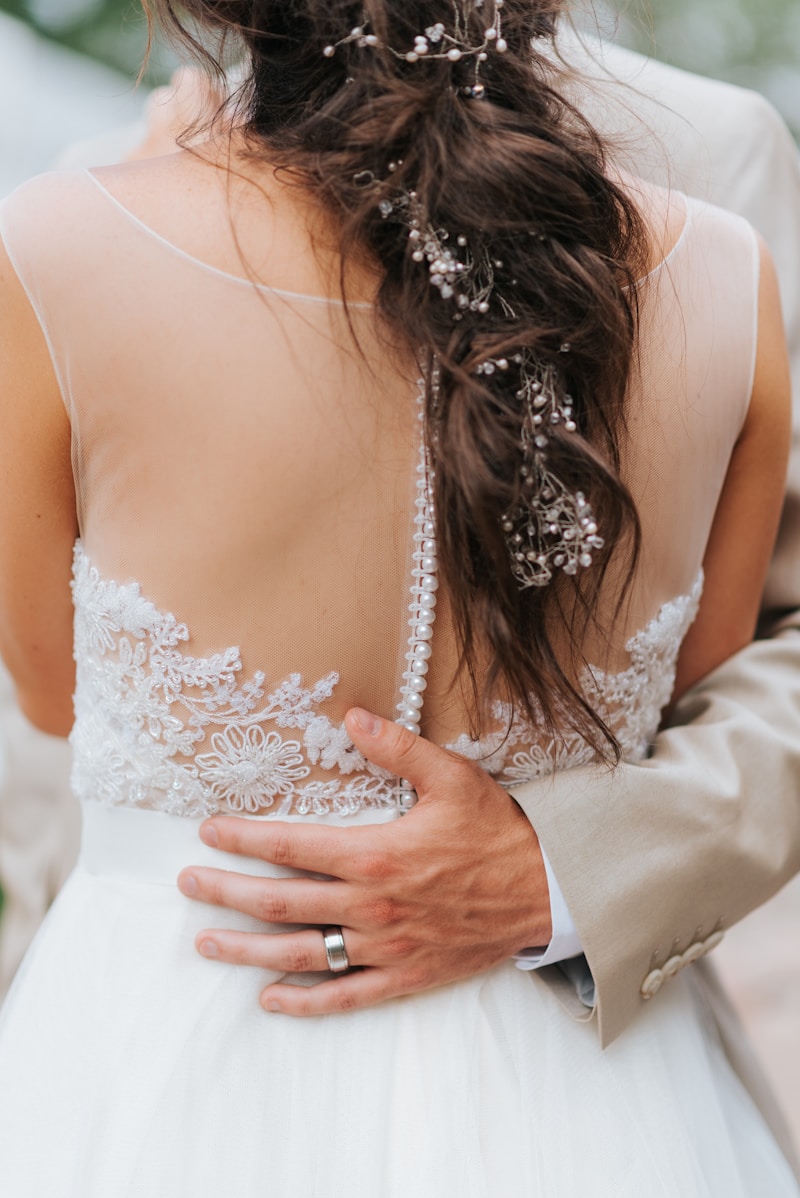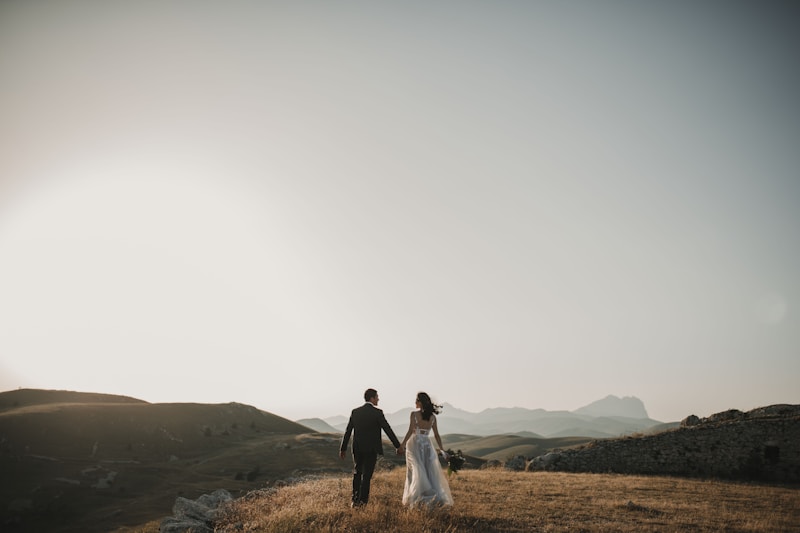Explore the Ultimate Guide to Bridal Style: Your Comprehensive Resource for Weddings
Understanding Bridal Style: The Essence of a Perfect Wedding LookPlanning a wedding can be one of the most exciting yet challenging experiences in a person’s life. One of the most crucial aspects of this journey is selecting the right bridal style, which encompasses everything from the dress to accessories, beauty regimens, and the overall theme of the wedding. In this article, we will delve into various bridal styles, popular trends, and essential tips to help you create a look that reflects your unique personality and vision for your big day. Whether you are searching for a timeless, classic gown or a modern, bohemian look, we’ve got you covered.What is Bridal Style?Bridal style refers to the overall aesthetic and fashion choices that a bride makes for her wedding day. This encompasses not just the wedding dress, but hair and makeup, as well as the choice of accessories, footwear, and even the bridesmaid styles. A bride’s style should resonate with her personality, preferences, and the overall wedding theme.Types of Bridal StylesBridal styles can be classified into various categories based on personal preferences, cultural influences, and the latest trends. Here are some popular bridal styles to consider:1. Classic Bridal StyleTimeless and elegant; often incorporates lace, satin, and pearls.2. Bohemian Bridal StyleFlowy dresses with natural elements; often includes vintage accessories.3. Modern MinimalistSleek lines and simple silhouettes with a focus on quality fabrics.4. ...
Decoding Wedding Dress Terminology: Your Ultimate Guide to Choosing the Perfect Gown
Understanding Wedding Dress TerminologyPlanning a wedding is an exciting journey, filled with love, joy, and intricate details that bring your dream day to life. One of the most significant elements is undoubtedly the wedding dress. However, when it comes to selecting your dream gown, navigating the myriad of wedding dress terminology can be overwhelming. In this comprehensive guide, we will break down essential terms, answer common questions, and provide you with all the knowledge you need to make an informed decision regarding your wedding dress.Common Wedding Dress Terms You Should KnowWedding dresses come with a lot of unique terminology that may be new to many brides. Here’s a glossary of key wedding dress terms:TermDefinitionA-lineA silhouette that is fitted at the waist and flows out to the ground, resembling the shape of a capital letter 'A'.BustleA style feature that involves gathering the train of the dress at the back for ease of movement.Chapel TrainA train that extends about 3 feet behind the dress, creating an elegant and flowing trailing effect.Empire WaistA dress style where the waistline is positioned just below the bust, ideal for creating a longer silhouette.LaceA delicate fabric typically used for overlays, adding elegance and texture to wedding gowns.MermaidA fitted gown that hugs the body until the knee and then flares out dramatically.SilhouetteThe overall shape or outline of the wedding dress, important for flattering different body shapes.TrainThe par...
Exploring the Latest Gown Styles for Every Occasion
When it comes to dressing for special occasions, the importance of choosing the right gown cannot be overstated. Gowns are more than just pieces of clothing; they are expressions of personal style and elegance. This article delves into various gown styles that are trending and suitable for diverse events, from weddings to formal galas.Understanding Gown StylesGowns come in an array of styles, fabrics, and designs. Whether you are attending a formal dinner, a wedding, or a cocktail party, there are gown styles tailored for every setting. In this article, we will explore popular gown styles, how to choose the perfect one, and the factors to consider when selecting a gown.Types of Gown StylesTo help you navigate the myriad of options, we've compiled a list of popular gown styles.Gown StyleDescriptionA-line GownA silhouette that flares out from the waist, creating an 'A' shape that flatters most body types.Ball GownCharacteristics include a fitted bodice and a full skirt. This is a classic choice for formal events.Mermaid GownFitted through the bodice and flares out at the knee, ideal for showcasing curves.Empire Waist GownFeatures a high waistline just below the bust, making it great for a flowing, relaxed fit.Sheath GownAlso known as a column gown, this style hugs the body from top to bottom.1. A-line GownThe A-line gown is a timeless choice that suits various body shapes. Its fitted bodice and flared skirt create a flattering silhouette, making it an ideal option for brides an...
Ultimate Guide to Choosing the Perfect Dresses for Brides
Choosing the right dress is one of the most significant aspects of wedding planning. With countless styles, fabrics, and designers to choose from, the task can feel overwhelming. In this comprehensive guide, we’ll explore the various options available for dresses for brides, along with tips for making the selection process smoother and more enjoyable. We’ll also address frequently asked questions and provide insights that can help you find the perfect dress that fits your vision, body shape, and wedding theme.Understanding the Types of Dresses for BridesWhen it comes to dresses for brides, the choices are vast. Here are some popular styles you may consider:Dress StyleDescriptionBest ForA-LineFitted at the waist and flows out to the ground, resembling the shape of a capital letter 'A.'All body typesBall GownCharacterized by a fitted bodice and a full skirt, often made of layers of tulle or organza.Traditional weddingsMermaidTight-fitting dress that flares out at the knees, accentuating the bride's curves.Hourglass body shapesSheathStraight cut that runs down from the neckline to the hem, creating a form-fitting silhouette.Petite bridesEmpire WaistFeatures a high waistline that sits just below the bust, flowing down into a loose skirt.Brides looking for comfortChoosing the Right Fabric for Your DressThe fabric of your wedding dress can significantly impact both its appearance and comfort. Here are some popular fabric options:Silk: Known for its luxurious feel and sheen, silk is...
Explore the Best Wedding Outfit Options: A Comprehensive Guide
Introduction The day of a wedding is often considered one of the most significant events in a couple's life. As such, the attire worn by the bride, groom, and guests plays a crucial role in creating the perfect atmosphere. Selecting the ideal wedding outfit options can be daunting, but it is essential for expressing personal style and ensuring comfort throughout the celebration. In this guide, we will explore various wedding outfit options, tips for choosing the best ensemble, and considerations that cater to different themes, traditions, and preferences. Understanding Wedding Outfit Options When it comes to wedding outfits, several factors influence the choices available. These factors include the couple's personal style, cultural traditions, the season in which the wedding is held, and the venue. Let's delve deeper into the popular wedding outfit options available for different parties involved: 1. Bridal Attire The bride’s outfit is often the focal point of the wedding. Here are some popular bridal attire options: Traditional Wedding Gowns: Classic and elegant, traditional gowns often feature white or ivory fabric and intricate lace details. Many brides opt for floor-length styles that resemble a fairytale princess.Modern Jumpsuits: For the contemporary bride, a chic jumpsuit is a fashionable alternative. This versatile option allows for movement and can be accessorized to add personal flair.Short Dresses: Ideal for summer weddings or casual settings, short dresses can be...
The Ultimate Guide to Formal Wear: Fashion, Style, and Occasion
Understanding Formal Wear: A Comprehensive OverviewIn today's ever-evolving fashion landscape, formal wear remains a staple for various occasions, from weddings and corporate events to black-tie galas. This article delves into the intricacies of formal attire, giving you essential tips and insights to navigate your formal wardrobe effectively.What is Formal Wear?Formal wear embodies a style of clothing designed to be worn on special occasions. It typically involves more sophisticated fabrics, tailored fits, and an overall polished appearance. But what specific types of attire are categorized as formal wear? Let’s explore these options.Types of Formal WearTypeDescriptionTuxedoA classic choice for black-tie events, typically featuring satin or silk lapels.Evening GownA long dress worn by women, often made with luxurious fabrics, perfect for formal balls.Business SuitA tailored suit (often dark-colored) ideal for business functions and formal meetings.Cocktail DressAppropriate for semi-formal occasions, usually knee-length with a stylish cut.Choosing the Right Formal Wear for the OccasionSelecting appropriate formal wear varies based on the occasion, and understanding the dress code is essential. Here are some common formal events and attire guidelines:WeddingsWeddings are one of the most common occasions for formal wear. Depending on the theme and location, the dress code may range from black tie to semi-formal. A formal evening gown or a tailored suit can make a lasting impres...
The Ultimate Guide to Choosing the Perfect Bridal Outfit for Your Big Day
Introduction to Bridal OutfitsYour wedding day is one of the most significant moments in your life, and choosing the perfect bridals outfit is essential to making the day memorable. With countless styles, fabrics, and designs to choose from, it can be overwhelming to decide on the ideal ensemble that reflects your personality and fits your wedding theme. This guide will take you through the must-know aspects of selecting a bridal outfit, ensuring you look stunning on your special day.Understanding Bridal Outfit StylesBridal outfits come in various styles, each suitable for different themes and personal preferences. Here are some popular styles you might consider:StyleDescriptionBest ForA-LineA fitted bodice that flows into a gentle A-line shape.Most body typesMermaidFitted throughout the body and flares out at the knees.Hourglass figuresBall GownA classic style that features a full skirt and fitted bodice.Traditional weddingsSheathA slim-fitting silhouette that follows the body's natural shape.Lean body typesBohemianCasual and free-spirited designs often featuring lace and flowing fabrics.Outdoor or beach weddingsChoosing the Right FabricThe choice of fabric can profoundly affect the overall look and feel of your bridal outfit. Some common fabrics include:Satin: Offers a luxurious sheen and is often used in ball gowns.Lace: Adds a romantic and vintage touch, ideal for bohemian styles.Chiffon: A lightweight, flowing fabric perfect for a relaxed silhouette.Organza: A crisp and ...
Exploring the Diverse Types of Wedding Dresses: A Complete Guide
When it comes to one of the most significant days in a person's life, choosing the perfect wedding dress is often at the top of the list. With a myriad of options available, brides can feel overwhelmed by the choices. Understanding the different **wedding dress types** can help streamline the decision-making process and ensure a stunning look on the big day. In this comprehensive guide, we will delve into various styles, materials, and designs, along with tips to find the ideal gown for you.Understanding the Main Types of Wedding DressesWedding dresses come in various shapes, cuts, and lengths. Each type carries its unique characteristics, making it essential to explore your options. Below, we categorize the prevalent **wedding dress types**. Wedding Dress Type Description A-Line This classic cut is fitted at the bodice and flares out at the skirt, resembling the shape of a capital letter 'A'. It suits almost all body types. Ball Gown This style features a fitted bodice and a voluminous skirt, often made with layers of tulle or organza. It’s perfect for traditional weddings. Mermaid Fitted through the bodice and hips, the skirt flares out at or below the knee, highlighting the bride's figure. Ideal for those wanting a sexy look. Sheath A simpler silhouette that flows straight down from the neckline to the hem. It offers a more modern look and works well for destination weddings. Tea Length This style falls between the knee and the ankle, pr...
Unveiling the Charm of Luxurious Bridal Attire: A Comprehensive Guide
Introduction to Luxurious Bridal AttireWeddings are one of the most significant events in a person’s life, and the bridal attire plays a crucial role in making the day memorable. Luxurious bridal attire embodies elegance, sophistication, and style, making every bride feel like a queen on her special day. Whether it's the exquisite fabric, intricate designs, or custom craftsmanship, luxurious bridal wear is an essential aspect of any wedding celebration. In this article, we'll explore various aspects of luxurious bridal attire, including styles, trends, and tips for choosing the perfect gown.The Importance of Luxurious Bridal AttireWhen it comes to wedding attire, the phrase "you get what you pay for" rings true. Investing in luxurious bridal wear not only enhances the bride's appearance but also adds to the overall atmosphere of the wedding. High-quality materials, such as silk, satin, and lace, are often used in luxurious bridal gowns, which provide a flattering fit and a beautiful drape. Moreover, luxurious bridal attire can help create unforgettable memories captured in photographs for a lifetime.Understanding Different Styles of Luxurious Bridal AttireWhen selecting luxurious bridal attire, it is essential to reflect on various styles that cater to different tastes and preferences. Here are some popular styles that many brides consider:Style TypeDescriptionA-LineThis silhouette features a fitted bodice that flows out to the ground, resembling the letter "A." It's flatteri...
Understanding Bridal Gown Prices: Factors That Influence Your Perfect Wedding Dress
Unlocking the Mystery of Bridal Gown PricesChoosing the perfect bridal gown is a pivotal moment in every bride's wedding journey. However, one of the most significant considerations is the price. Bridal gown prices can vary dramatically, and understanding the factors that influence these prices can help you make an informed decision. In this article, we'll explore the various elements that influence bridal gown prices, as well as some tips on how to save without sacrificing style.Factors Influencing Bridal Gown PricesBridal gown prices can range from a few hundred to several thousand dollars. Numerous factors contribute to this disparity. Here are some key aspects that can significantly impact the cost:FactorsDescriptionDesignerWell-known designers typically charge more for their creations, reflecting their brand reputation and craftsmanship.FabricThe choice of material can greatly affect the price. Luxurious fabrics like silk or lace will be more expensive than synthetic options.CustomizationCustom-made gowns involve higher labor costs, as they are tailored specifically to your measurements and preferences.LocationPrices can vary by region. For instance, bridal gown prices in metropolitan areas like New York City may be higher than in smaller towns.SeasonalityBridal couture is often seasonal. Prices may go up during peak wedding seasons (typically spring and summer) and lower during off-peak times.Store PoliciesA store's return policy, alteration services, and customer servi...
The Ultimate Guide to Designer Wedding Dresses: Choosing the Perfect Dress for Your Big Day
Understanding Designer Wedding DressesWhen it comes to planning a wedding, one of the most significant decisions a bride will make is choosing the perfect dress. Designer wedding dresses are the epitome of elegance and style, offering brides unparalleled quality and unique designs. This article will delve into the world of designer wedding dresses, covering various aspects such as the latest trends, what to look for when shopping, and tips for finding the ideal fit.The Allure of Designer Wedding DressesDesigner wedding dresses are not just garments; they represent a bride's identity and vision for her special day. Renowned designers pour their creativity and expertise into each gown, ensuring that each piece is not only of superior quality but also tells its own story. From lavish fabrics to exquisite detailing, designer dresses can elevate a wedding to a whole new level.Top Designer Wedding Dress TrendsAs weddings evolve, so do the styles and trends surrounding bridal fashion. Here are some of the hottest trends for designer wedding dresses: Minimalism: Simple yet chic designs with clean lines and understated elegance. Vintage-Inspired: Dresses that feature lace, embroidery, and classic silhouettes reminiscent of past decades. Colorful Gowns: Dresses in soft pastels or bold hues that make a statement compared to traditional white gowns. Eco-Friendly Fabrics: Sustainable materials that not only look beautiful but also have a lower environmental impact.Shopping for...
Unlock Your Dream Day: A Definitive Guide to Affordable Wedding Gowns
Finding Your Perfect Affordable Wedding GownPlanning a wedding is an exciting yet daunting task. Among the myriad of details, one of the most important choices is selecting the perfect wedding gown. However, the reality of wedding planning often comes with a hefty price tag, making it seem almost impossible to find affordable options. Fear not; this guide delves into the world of affordable wedding gowns without compromising your dream wedding aesthetics.Understanding the Importance of Wedding GownsFor many brides, the wedding gown symbolizes the culmination of countless dreams and expectations. It’s not just a piece of clothing — it embodies moments of love, celebration, and commitment. Therefore, finding a way to express this sentiment without breaking the bank is crucial.Why Choose Affordable Wedding Gowns?The most compelling reason to choose affordable wedding gowns is the ease on your wallet. With the average wedding dress costing around $1,800 in the U.S., many brides seek alternatives that will fit within their budget. An affordable gown not only helps in saving money for other wedding expenses but also offers you the freedom to be more flexible with your wedding budget. This could allow you to allocate funds towards aspects like venue enhancements, catering, or even your honeymoon.Where to Find Affordable Wedding GownsThere are many avenues available to find beautiful yet affordable wedding gowns. Here are some popular options: Bridal Boutiques: Many boutiques offe...
Discover the Allure of Elegant Wedding Dresses for Your Dream Day
Why Choose Elegant Wedding Dresses for Your Special Day?When it comes to planning a wedding, one of the most important choices you'll make is selecting the perfect bridal gown. Elegant wedding dresses embody grace, beauty, and sophistication, making them an ideal choice for brides who want to make a memorable statement on their special day. In this article, we explore the various styles, trends, and elements that define elegant wedding dresses, providing you with the knowledge to make an informed decision.Understanding What Makes a Dress "Elegant"Elegant wedding dresses typically feature refined silhouettes, luxurious fabrics, and intricate details that enhance the overall look. Characteristics of elegant wedding dresses often include: Timeless Styles: A-line, ball gowns, and sheath dresses are some of the popular styles that exude elegance. Quality Fabrics: High-quality materials such as silk, satin, lace, and chiffon are commonly used to create stunning gowns. Beautiful Embellishments: Delicate beadwork, lace appliqués, and embroidery add a touch of sophistication.When choosing an elegant wedding dress, consider your personal style, body shape, and the overall theme of your wedding. Popular Styles of Elegant Wedding DressesBrides have an array of styles to choose from when it comes to elegant wedding dresses. Here are some of the most popular options: Style Description A-Line This classic shape is fitted at the waist and flow...
Timeless Elegance: Exploring Classic Bridal Looks for the Modern Bride
Introduction to Classic Bridal LooksEvery bride dreams of looking stunning on her wedding day, and what better way to achieve that than by embracing classic bridal looks? These timeless styles not only reflect elegance but also evoke a sense of nostalgia, bringing charm and grace to any ceremony. In this article, we will delve into various classic bridal looks, explore their origins, and provide tips for modern brides looking to incorporate these styles into their big day.The Allure of Classic Bridal LooksClassic bridal looks hold a unique place in wedding fashion, characterized by their enduring beauty. These styles have transcended generations, proving that some trends never fade. Whether it's the iconic silhouette of a vintage gown or the subtle sophistication of a timeless hairstyle, each element plays a significant role in creating a memorable bridal look.1. Iconic Silhouettes: The A-Line and Ball GownTwo of the most recognized classic bridal gown silhouettes are the A-line and the ball gown. The A-line dress is universally flattering, tapering at the waist and flowing outwards to the hem, making it suitable for various body types. On the other hand, the ball gown embodies fairy-tale romance with its voluminous skirt and fitted bodice, often seen in the wardrobes of royal brides.SilhouetteDescriptionBest ForA-LineFlattering silhouette that flares out from the waist.All body typesBall GownClassic fairy-tale style with a fitted bodice and full skirt.Younger brides or those...
Understanding Wedding Dress Sizes: A Comprehensive Guide for Brides-to-Be
Introduction to Wedding Dress SizesSelecting the perfect wedding dress is a monumental part of preparing for one of the most significant days of your life. One crucial aspect that many brides encounter during their search is understanding wedding dress sizes. This article provides insights into the different sizing systems, tips for finding your perfect fit, and answers to frequently asked questions surrounding wedding dress sizes.Understanding Wedding Dress Sizes: A Global PerspectiveWedding dress sizes can vary drastically depending on the region and designer. In many Western countries, sizes are often based on a numerical system (e.g., size 6, 8, 10, etc.), whereas in some regions, sizes may be categorized using letters (e.g., XS, S, M, L). This can lead to confusion when brides are trying on dresses from various designers. Below is a brief overview of common sizing systems used in different parts of the world:RegionSizing SystemExample SizeUnited StatesNumerical (Even Sizes)6, 8, 10United KingdomNumerical (Even Sizes)8, 10, 12EuropeNumerical (French or Italian Sizes)34, 36, 38ChinaSize in Centimeters160/84A (160 cm tall, 84 cm bust)AustraliaNumerical (Even Sizes)8, 10, 12How to Determine Your Wedding Dress SizeDetermining your wedding dress size can be daunting, but it doesn’t have to be. Here are some essential steps to follow:1. Take Accurate MeasurementsBefore heading to the boutique, it’s crucial to know your measurements. You will need a measuring tape and a friend t...
Discover the Elegance of Simple Wedding Gowns: A Comprehensive Guide
The Allure of Simple Wedding GownsWhen it comes to planning a wedding, one of the most significant decisions is choosing the perfect wedding gown. A growing trend in recent years has been the shift towards simple wedding gowns. These elegant, understated dresses encapsulate sophistication and style, making them favored by many brides. In this article, we will explore the various aspects of simple wedding gowns, including their styles, benefits, and how to select the right one for your special day.What Are Simple Wedding Gowns?Simple wedding gowns are designs that prioritize minimalism, clean lines, and elegant fabrics over ostentatious embellishments. They often feature a classic silhouette that allows for comfort and versatility. Many brides appreciate simple gowns for their timelessness, as they can easily evoke a sense of grace without overwhelming the eye.Different Styles of Simple Wedding GownsSimple wedding gowns come in various styles to suit every bride's preference. Below are some popular styles:1. A-Line GownsThese gowns are fitted at the waist and gradually flare out to the hem, creating a flattering line for all body types.2. Sheath GownsDresses that fit closely to the body, originating from the bodice to the hem, perfect for showcasing natural curves.3. Tea-Length GownsThese dresses are typically knee-length, offering a vintage feel while keeping things feminine and chic.4. Slip GownsCharacterized by their sleek silhouette, slip gowns are incredibly comfortable a...
Understanding the Elegance of Bridal Silhouettes: A Comprehensive Guide
When it comes to planning a wedding, the bridal gown plays an essential role in defining the bride's overall look and feel on her special day. Among the many elements to consider, the bridal silhouette stands out as one of the most crucial choices. In this article, we will explore the various types of bridal silhouettes, their characteristics, and how to choose the right one for your body shape and wedding theme.What is a Bridal Silhouette?The term bridal silhouette refers to the outline or shape of a wedding dress when viewed from a distance. It defines how the gown falls on the body and can dramatically affect the bride's appearance. Understanding different bridal silhouettes will help brides determine which style enhances their unique features and complements their wedding theme.Types of Bridal SilhouettesSilhouetteDescriptionBest forA-LineFits snugly at the waist and flows outward to the ground, resembling a capital "A."All body types; especially flattering for pear-shaped figures.Ball GownCharacterized by a fitted bodice and a voluminous skirt, this silhouette is reminiscent of fairy-tale princesses.Hourglass figures; ideal for formal or traditional weddings.MermaidFitted through the bodice and hips, then begins to flare out at or below the knee, accentuating curves beautifully.Hourglass and athletic figures; perfect for a glamorous, modern wedding.Column (Sheath)Follows the natural shape of the body and typically falls straight to the floor, offering a sleek and simple ...
The Ultimate Guide to Wedding Dress Shopping: Tips, Trends, and Tricks
Mastering the Art of Wedding Dress ShoppingWedding dress shopping is one of the most exciting but also nerve-wracking experiences for any bride-to-be. The dress symbolizes love, commitment, and a new beginning. As a pivotal part of your wedding day, choosing the right wedding dress can feel overwhelming. However, with the right approach and knowledge, you can enjoy a seamless shopping experience. This comprehensive guide will walk you through everything you need to know about wedding dress shopping, from setting your budget to final fittings.Establishing Your BudgetBefore you dive into the magical world of wedding dress shopping, it's crucial to set a realistic budget. Consider the following: Research average costs: Wedding dresses can vary significantly in price, with average costs ranging from $1,000 to $3,000. Designer gowns can exceed $10,000. Include additional costs: Remember to account for alterations, accessories, and taxes, which can add up to an additional 30-50% of the dress price.Sample Wedding Dress Budget Cost Item Estimated Cost Wedding Dress $1,500 Alterations $300 Accessories $200 Cleaning and Preservation $150 Total Estimated Cost $2,100Choosing Your StyleWith so many styles available, defining what you like and what flatters your body type is essential. Popular styles include: A-Line Dresses: Flattering for all body types. It has a fitted bodice and flows into a skirt that resembles the shape of an uppercase "A." Ball...
Discover the Beauty of Modest Bridal Wear: Elegance and Grace for the Modern Bride
Introduction to Modest Bridal WearIn recent years, modest bridal wear has gained immense popularity among brides seeking elegance and sophistication without compromising on their personal values or cultural traditions. Whether you're looking for a gown that reflects your faith or simply prefer a more demure design, modest bridal wear offers a plethora of options that can make your special day even more memorable.What is Modest Bridal Wear?Modest bridal wear refers to wedding dresses that provide more coverage compared to traditional bridal gowns. These dresses typically feature higher necklines, longer sleeves, and longer hemlines, but that does not mean they lack style or uniqueness. Many designers are now specializing in modest designs, creating stunning garments that cater to modern tastes while still adhering to modesty standards.Trends in Modest Bridal WearAs the demand for modest bridal gowns increases, several trends have emerged. Here are some notable ones: Floral Embellishments: Floral designs are being incorporated into modest gowns, providing a fresh and romantic touch. Lace and Sheer Fabrics: Lace can add an element of sophistication and texture while softening the overall look. Modular Styles: Brides can mix and match styles, such as choosing a strapless dress with a removable lace overlay. IDeas from Around the World: Modest bridal wear is influenced by various cultures, including Middle Eastern, South Asian, and Western styles.Choosing the Right Mod...
Discover the Allure of Unique Wedding Dresses: A Comprehensive Guide
Every bride dreams of her special day, and one of the most significant aspects of that dream is, undeniably, the wedding dress. While traditional gowns are beautiful, many brides now seek something different—something that reflects their personality and style. This is where unique wedding dresses come into play. In this article, we'll explore various styles, trends, and tips that could guide you in finding that one-of-a-kind gown for your big day.What Makes a Wedding Dress Unique?Unique wedding dresses stand out for various reasons, whether it's the design, fabric, or the story behind the gown. Here are some features that contribute to a wedding dress's uniqueness:Custom Design: Many brides opt for custom-designed gowns, tailored specifically to their preferences and body shape.Unconventional Fabrics: The use of non-traditional materials like lace, tulle, or even eco-friendly fabrics can impart a unique touch.Unexpected Colors: While white or ivory remains classic, colors like blush, lavender, or even bold shades like red are making waves.Intricate Details: Unique embellishments such as hand-embroidered patterns, beading, or even 3D floral appliqués add character.Unexpected Silhouettes: Non-traditional shapes, like high-low hems or jumpsuits, are emerging as popular choices.Current Trends in Unique Wedding DressesFashion constantly evolves, and wedding dress trends are no exception. Here are some current trends in unique wedding dresses that every bride should consider:The Ri...
